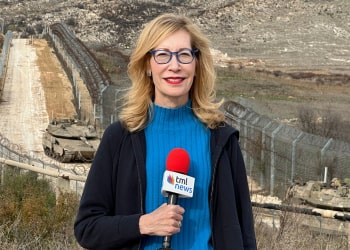Israeli Prime Minister Benjamin Netanyahu and Israel Defense Forces Chief of Staff Lt. Gen. Eyal Zamir reportedly engaged in a heated exchange during a recent war cabinet meeting over proposed plans for the future of the Gaza Strip. The argument, widely reported by Israeli media outlets, marks a growing rift between Israel’s political leadership and its military command as the war in Gaza approaches the end of its 21st month.
The central point of contention was a government-backed proposal to partially displace Gaza’s civilian population as part of a long-term security realignment. Zamir, backed by several senior defense officials, firmly rejected the plan, calling it unworkable on the ground and likely to provoke international backlash. According to sources present at the meeting, the confrontation was unusually tense and reflects deeper disagreements over how Israel should manage Gaza once the fighting ends.
While debates continue in government offices, Israeli troops on the ground are facing an increasingly dangerous enemy. Combat engineers from Yahalom, the army’s elite engineering unit, have reported a sharp rise in buildings and tunnel shafts rigged with delayed or secondary explosives—many of them believed to have been planted during temporary humanitarian ceasefires.
This holiday season, give to:
Truth and understanding
The Media Line's intrepid correspondents are in Israel, Gaza, Lebanon, Syria and Pakistan providing first-person reporting.
They all said they cover it.
We see it.
We report with just one agenda: the truth.


“They wait for us to leave—and then they rig the buildings,” said Sgt. Major Chaim Malespin, a Yahalom veteran, in an interview with The Media Line. “Ceasefires are not pauses for Hamas—they’re preparation time.”
Military sources say Israeli units frequently clear a structure, only to be targeted by hidden charges when they return. These traps, often placed during lulls in combat, have become the leading cause of IDF casualties in the war, according to army assessments.
Former IDF spokesperson Lt. Col. (res.) Jonathan Conricus told The Media Line that Hamas has been collecting unexploded Israeli ordnance to make improvised explosive devices. “They’ve learned to repurpose our own weapons against us,” he said, adding that these booby-trapped areas are often left untouched due to concerns over hostages or nearby civilians.
As the ground war grows more complex, the lack of a clear postwar vision for Gaza is beginning to affect battlefield decisions. The divide between Israel’s civilian and military leadership is no longer just political—it’s shaping the way the war is being fought.